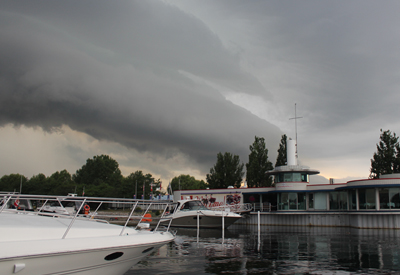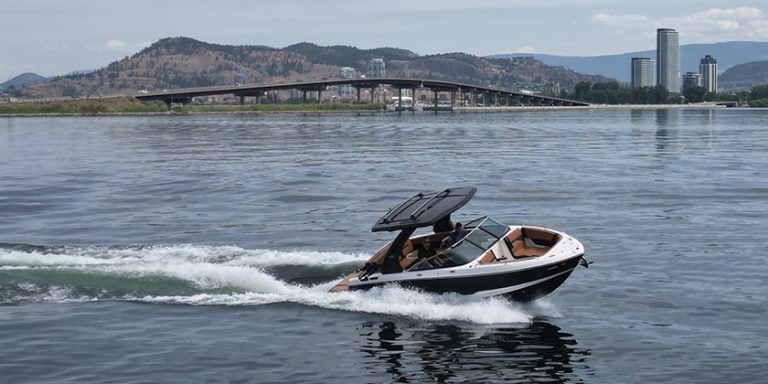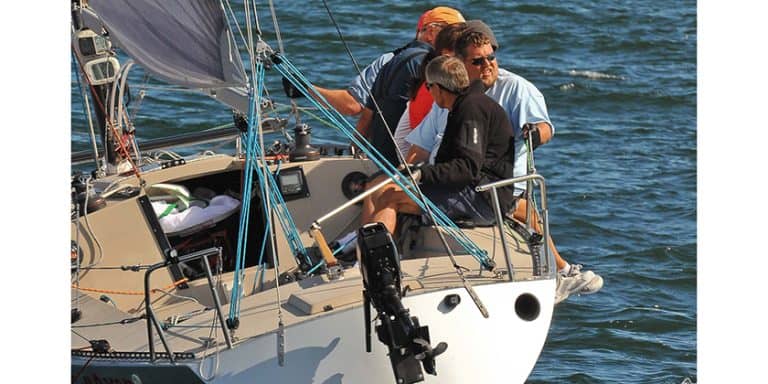Marine Considerations for Thunderstorms

July 12, 2016
When at sea, from the coastline to many miles offshore, frontal and squall line thunderstorms move out from land areas with undiminished intensity. These may come at any time of day or night, and can usually be anticipated from land-based reports, as the weather systems approach the coast.
While thunderstorms that form at sea can be of the air mass, squall line, or frontal type, the most frequent are the air-mass kind. They occur most often in the early morning around dawn when water temperatures have remained warm through the night and nocturnal cooling of the air aloft is at its maximum (the environmental lapse rate is at its highest).
At sea, the highest object is a boat and so it is a particularly good target for a lightning strike. In a crowded harbour, surrounded by tall masts, shore buildings, and hills, small boats are somewhat protected (but not completely safe). Once lightning strikes a boat, the electrical charge takes the most direct route to the water where it will dissipate in all directions.
Even with the latest weather reports, thunderstorms over coastal waters are frequently unpredictable. If caught in a storm the following action should be taken:
Stop fishing, water skiing, scuba diving, swimming, or other water activities when there is lightning or even when weather conditions look threatening. The first lightning strike can be miles in front of an approaching thunderstorm cloud.
Lower, remove, or tie down the radio antenna and other protruding devices if they are not part of the lightning protection system.
Disconnect and do not use or touch the major electronic equipment, including the radio, during the storm.
To the degree possible, avoid making contact with any portion of the boat connected to the lightning protection system. Never be in contact with two components connected to the system at the same time.
Stay in the centre of the cabin. If there is no cabin, stay low in the boat. Don’t be a ‘stand-up human’ lightning mast.
Keep arms and legs in the boat. Do not dangle them in the water.
If a boat has been, or is suspected of having been, struck by lightning, check out the electrical system and the compasses to ensure that no damage has occurred.
Environment Canada Tips
Lightning Safety
Paying close attention to the latest weather information is critical to avoiding the possibility of being struck by lightning. If thunderstorms are forecast, mariners should not leave port. Those who are already out on the water and cannot get back to land should drop anchor and get as low as possible. Large boats with cabins, especially those equipped with lightning protection systems, and metal vessels are relatively safe. Those on board should stay inside the cabin, away from metal surfaces and any objects or parts of the boat that could conduct electricity. Stay off the radio unless it is an emergency.
Mariners’ Tips
The vast majority of lightning injuries and deaths on boats occur on small vessels with no cabin or inadequate grounding. If possible, boats should be professionally grounded and have a 45 degree cone of protection.
Republished from Introduction to Weather for Recreational Boaters. To learn more about forecasting weather and reading conditions register for a course here.
Join the CPS-ECP Boaters’ Weather Wisdom Facebook group




























